The Verve
verve 乐队 1990 年组建于英国威根。从唱片中,你怎么也不会猜到 verve 是来自一个田园般的、纯朴的南方小镇。当然,如果没有不同于一般的背景,他们永远也不会投入这种强烈的音域中。面对目前颇为时髦的"虚无逃避主义"英国摇滚乐风气,他们时而松弛、时而压抑的风格超出了传统的歌曲结构,代之以空间摇滚之上的迷幻主义,外加爵士风格和氛围音乐脉络。 乐队的成员来自威根的温斯坦利大学,成员包括主唱 richard ashcroft、吉他手 nick mccabe、贝司手 simon jones 和鼓手 peter salisbury。他们早期的单曲,如《all in the mind》和《gravity grave》,初步确立了乐队猛烈的音乐招牌。 1989 年,他们与 virgin 公司所属的 hut 公司签约,在随后的几年中,乐队出版了一系列颇受好评的单曲,诸如《she's a superstar》和《blue》等,都进入了独立音乐的排行榜。 1993 年,他们出版了第 1 张专辑《a storm in the heaven》,真正显示了他们的实力。这张专辑是在与世隔绝的康沃尔郡录音室完成的,具有与 van morrison 的《astral weeks》或 talk talk 的《spirit of eden》相同的水准。当然,这完全是他们自己的风格。其中一些片断,如同在温暖的夏日里潮汐萦绕在你耳边;但另一些,如《silde away》和《the sun,the sea》,厚重的吉他音如同潮水一般。 verve 在英国也成了热门乐队,被传媒称为“下一件大事”。 1994 年,verve 出了一张集单曲和单曲 B 面歌曲的集锦《no come down》,并且开始了美国之行,虽然有来自美国爵士乐公司 verve 的商标纠纷,但他们还是开发了美国的新市常他们也曾与 oasis 乐队一起在英国巡演,最后他们与 oasis 的制作人 owen morris 搭上了关系,morris 答应他们担任第 2 张专辑《a northern soul》的制作人。 1995 年《a northern soul》出版,英国传媒的好评铺天盖地,然而它还是被美国市场忽略了。尽管如此,该专辑在英国排行榜上的表现还不错,进入了前 20 名。《on your own》、《history》和《this is music》都是上乘之作。这次所有的曲目结构性更强,内容都取材于自己的亲身经历,特别是 mccabe 的吉他尤为特色。 不幸的是,虽然凭着乐队这样的高水平会使他们前途无量,但他们却在第 2 张专辑出版不久便宣布解散,主要原因是 ashcroft 和 mccabe 在创作和个人关系上出现了裂痕。 ashcroft 举行了几场个人原声音乐会,并于 1995 年底出现在 oasis 的演唱会上。 1996 年初,在没有 mccabe 的情况下,ashcroft、jones 和 salisbury 以另外一个名字重新,ashcroft 也计划出版自己的专辑。 1997 年春,verve 重组,并出版了新的专辑《urban hymns》。Long acclaimed as one of the most innovative and spellbinding bands on the contemporary British pop scene, the Verve finally broke through to a mass international audience in 1997 with the instant classic "Bittersweet Symphony." By no stretch a study in overnight success, the group's rise was instead the culmination of a long, arduous journey that began at the dawn of the decade and went on to encompass a major breakup, multiple lawsuits, and an extensive diet of narcotics. Perfecting an oceanic sound that fused the exploratory vision of '60s-era psychedelia with the shimmering atmospherics of the shoegazer aesthetic, the Verve languished in relative obscurity while waiting for the rest of the music world to play catch-up, creating one of the most complex and rewarding bodies of work in modern rock & roll long before most listeners even learned of the group's existence — only to again fall apart at the peak of their success. Originally known simply as Verve, the group was formed in the small Northern English city of Wigan in 1989. Richard Ashcroft — a swaggering, shamanic figure in the classic rock star mold — led the band, whose original lineup also included guitarist Nick McCabe, bassist Simon Jones, and drummer Peter Salisbury. Sharing a collective fondness for the Beatles, Funkadelic, and Krautrock — as well as a legendary appetite for psychedelics — the quartet signed to the Hut label within months, debuting in March 1992 with the single "All in the Mind," the first in a series of indie chart-topping efforts featuring the eye-catching artwork of designer Brian Cannon. Subsequent efforts like "She's a Superstar" and "Gravity Grave" captured an original musical identity growing by leaps and bounds, distinguished chiefly by Ashcroft's elemental vocals and McCabe's echoing guitar leads.While Verve's long, liquid jams found favor on the British indie charts, pop radio looked the other way. Their majestic debut LP, 1993's A Storm in Heaven, was a critical smash, but positive reviews from a variety of critics failed to translate into strong record sales. The following summer, Verve appeared on the second stage at Lollapalooza, a tour tempered by a string of disasters — not only was Salisbury arrested for destroying a Kansas hotel room, but Ashcroft was also hospitalized after suffering from severe dehydration. Around that same time, the American jazz label also dubbed Verve slapped the band with a lawsuit, forcing the quartet to officially change its name to "the Verve." Sessions for the 1995 follow-up, A Northern Soul, proved to be the last straw — admittedly recorded under the influence of a massive intake of Ecstasy, the album's harrowing intensity was met with disappointing sales and little media recognition, and just three months after its release, Ashcroft made his exit.Although Ashcroft quickly reassembled the Verve a few weeks later, McCabe initially refused to return, and was replaced by guitarist/keyboardist Simon Tong. Finally, in early 1997, McCabe came back to the fold, and as a quintet they recorded Urban Hymns, their breakthrough LP. Heralded by the smash "Bittersweet Symphony" — a single built around a looped sample of a symphonic recording of the Rolling Stones' "The Last Time" — Urban Hymns launched the Verve among the U.K.'s most popular bands. Even at their peak, however, the curse of the band's past lingered on, as legal hassles awarded 100 percent of the song's publishing rights to ABKCO Music, which controlled the Stones' back catalog. The second single from the album, the haunting "The Drugs Don't Work," became the Verve's first U.K. number one smash, while the hit singles "Lucky Man" and "Sonnet" soon followed. However, when McCabe pulled out of the group's 1998 U.S. tour, the group suffered yet another blow. After months of rumors, the Verve officially split the following spring.Ashcroft launched a solo career in the early 2000s and enjoyed success with a number of singles, including "Break the Night With Colour." Meanwhile, Nick McCabe remixed a track for the Music and collaborated with British songwriter John Martyn, while Tong and Jones formed a short-lived band named the Shining. Tong later joined the Good, the Bad & the Queen in July 2006, and although he continued to focus on his post-Verve projects, the remaining members of the Verve reunited in 2007 for an international tour. The band also set to work on another studio album, Forth, which was released in August 2008 following a successful year of sold-out concerts and festival dates.

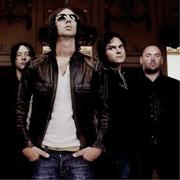
 多远都要在一起 (cover: G.E.M. 邓紫棋) - 王亚男
多远都要在一起 (cover: G.E.M. 邓紫棋) - 王亚男




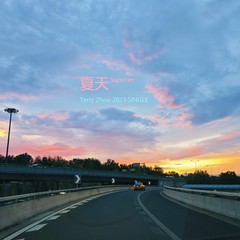
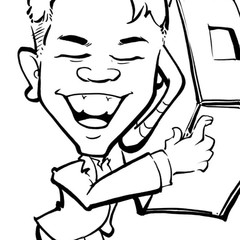


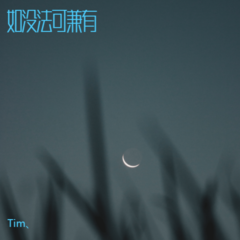




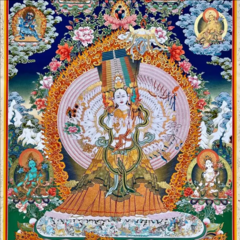














![[STATION] aespa《Dreams Come True》MV Teaser - aespa (에스파)](https://img2.kuwo.cn/wmvpic/324/79/54/2120387380.jpg?imageView2/1/w/195/h/130/format/jpg/q/60)





